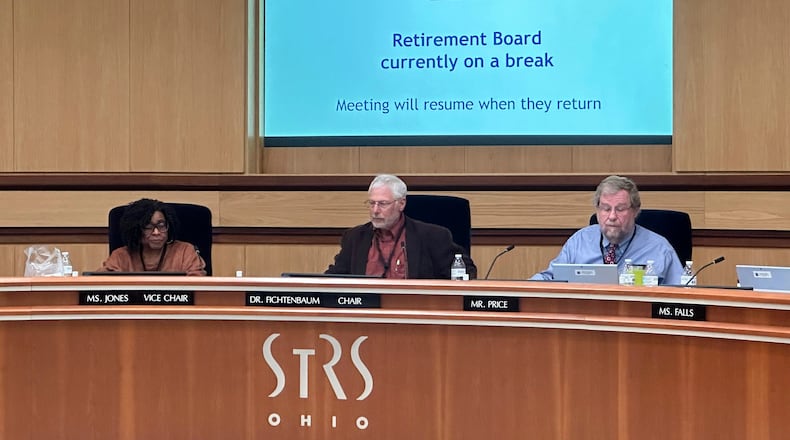For active members who retire between June 1 and May 1, 2030, STRS approved the required years of services for an unreduced retirement benefit lowered to 32 years at any age from 33 years at any age. Eligibility for a reduced retirement benefit is lowered to 27 years of service from 28 years of service, STRS said.
Active members retiring between June 1, 2030 and May 1, 2032 will see eligibility for unreduced benefits temporarily reduced to 33 years of service, and after June 1, 2032, a minimum of 34 years of service will be required for unreduced benefits after June 1, 2032.
The total cost for the plan is about $1.8 billion, according to documents on the STRS website.
The board members spent nearly four hours listening to presentations and debating if the plan was fiscally responsible. A presentation from the board’s actuarial consultant, Cheiron, presented several options, including the one that the board ultimately decided on. Some board members worried the changes cost too much while others argued it was important to help both current teachers and retirees.
Alison Lanza Falls, a board member appointed by the treasurer of state and who voted against the plan, said the plan seemed to depend on what happens in the first few years in the economy and could not guarantee a positive outcome for STRS finances.
“If we’re in it for the long game, we want to do something for the teachers now but have flexibility while we commit to guardrails,” Falls said.
Rudy Fichtenbaum, chair of the board and a former Wright State University professor, said he believed the board was being responsible and following state law in reviewing the recommendations from advisors. He voted for the plan.
“There really are no guarantees,” he said, referring to the economy and STRS finances.
Michael Harkness, a member from Akron Public Schools, said there were pros and cons to the plan as he saw it. He voted for the plan.
“The pro that we have is giving teachers some choices and also helping some of our most vulnerable retirees,” he said. “And the con is, we have to face the scrutiny of a legislature who really isn’t happy with education anyways.”
STRS oversees about $95 billion invested on behalf of Ohio’s educators. About half a million teachers and retirees are paid into or receiving benefits.
STRS has been embroiled in controversy in the last few years following the dismissal of their previous executive director, a takeover from board members who want more transparency, and a lawsuit against two of its board members from the state.
In 2017, the state stopped cost-of-living increases for STRS retirees, following a pension reform law in 2012 that required public employees to work longer for fewer benefits. In 2022, a one-time cost-of-living adjustment was made of 3%, but retirees still say it is not where they want it to be.
The board is looking for the next director of the STRS, after the previous director was paid to leave in 2024 and a previous interim director left in 2024.
About the Author

